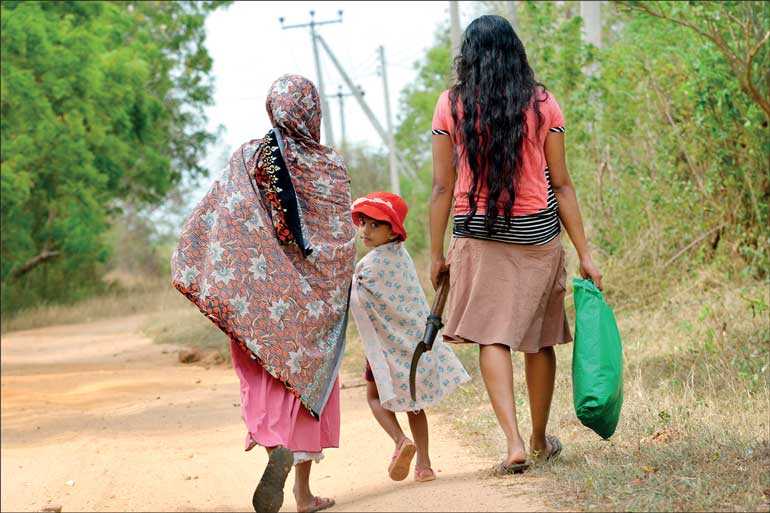Thursday Dec 18, 2025
Thursday Dec 18, 2025
Monday, 21 September 2020 00:00 - - {{hitsCtrl.values.hits}}

If people become more open to change and educate themselves about the reality and diversity of races and ethnicities, the world will be closer to end the constant wars between races and ethnicities – Pic by Shehan Gunasekara
By Maleesha Gunasekara
Race and ethnicity are mixed with many dominating aspects of society including politics, economics and education. With the increasing diversity of racial and ethnic demography, the controversial racial and ethnic issues continue to increase as well.
More detailed attention is paid and thoughtful political decisions are made in order to create peace and understanding among citizens and nations. However, to make successful decisions, close interest is paid by people to educate themselves about the depth of the intertwined relationship between race and ethnicity, not only within a nation, but also throughout the world.
The understanding of race and ethnicity is misled by the informal recognition the society gives these two terms by portraying it as if they are synonymous. “Race” and “Ethnicity” have varied meanings.
“Race” is the classification of humans based on biological and physical differences. This classification has become extremely complicated with the continuing intermix between people of different races, which is very apparent in the 21st century. Another often ignored fact is believing racial differences are based on biological differences while ignoring the fact that people have identical physical features. A good example is the common mistake made by people from distant continents in assuming Sri Lankans are Indians, and Koreans are Japanese where as there are specific distinct differences that make each race unique.
Race often plays an economic role which socially differentiates people’s economic status according to the hierarchy of their race in a society. In Brazil, the socio-economic status of an individual frequently affects his/her racial category. This is reflected that “Money whitens,” a darker-skinned person may become “white” based on the person’s higher economic status. (Hanchard, 1994; Reichmann, 1999; Twine, 1998).
Ethnicity is based on cultural traits; “embodiment of values, institutions, and patterns of behavior, a composite whole representing a people’s historical experience, aspirations, and worldview” (Deng 1997). Ethnic classification determines a person’s acceptance to a specific group.
Ethnicity is more towards human experience which determines identity, whereas race is something a person is inherited with. People of different races can be a part of the same ethnicity. Though ethnic difference makes individuals unique, it could also hinder the reinforced status expected from a specific society. Therefore, with the constant changes in society, maintenance of a specific status and the flexibility to embrace different social structures at different times is crucial.
The society has parallelly constructed racial and ethnic differences with hierarchic differences, where these differences will directly or indirectly determine an individual’s worth in a society.
There are two sides of consequences to this hierarchy driven by socio-economic and political influence. One would be the positive consequence where some groups gain privileges because of their racial or ethnic statuses. These groups would sometimes misuse their liberty to undermine the others. The other consequence would be the ones that face a great deal of loss due to their racial and ethnic differences. The Official Language Act No. 33 of 1956, A.K.A “The Sinhala Only Act” that privileged the Sinhalese and caused many social and economic conflicts for Tamils, which resulted in a 30-year-old war, is a good example for this.
With all these facts, it is apparent that racial and ethnic differences do not inheritably cause conflict, but the social meaning of status of these differences leads to conflict.
Race and ethnicity is not stagnant, it’s ever changing depending on the changes in a society during a given time. If people become more open to change and educate themselves about the reality and diversity of races and ethnicities, the world will be closer to end the constant wars between races
and ethnicities.
The writer is an undergraduate of University of London and a student member of CIM. She’s an enthusiast on International Relations and Sociology.